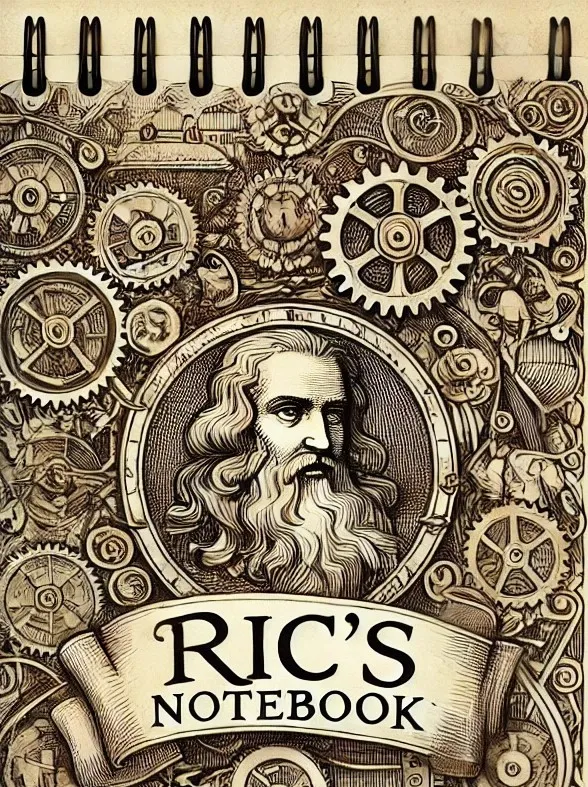
- Published on
- Authors

- Name
- ric de yuga 😄
🌌 Introduction to Variational Quantum Eigensolver (VQE)
The Variational Quantum Eigensolver (VQE) is a pivotal algorithm in the realm of quantum computing, offering a practical solution for calculating the ground-state energy of complex quantum systems. Unlike phase estimation algorithms, which require long coherence times and high gate depths, VQE is designed to work efficiently with shorter quantum circuits and less stringent requirements on quantum processors. This makes VQE particularly well-suited for current noisy intermediate-scale quantum (NISQ) devices.
🎓 Understanding the Basics
Before diving into the intricacies of VQE, let's review some fundamental concepts:
- Quantum System: A physical system that is governed by the laws of quantum mechanics, such as atoms, molecules, or subatomic particles.
- Hamiltonian: The operator that represents the total energy of a quantum system. It encodes all the information about the system's dynamics and interactions.
- Ground State: The lowest energy state of a quantum system. Finding the ground state is crucial for understanding the system's properties and behavior.
With these concepts in mind, let's explore how VQE tackles the challenge of finding the ground-state energy.
🔍 How VQE Works
Hybrid Quantum-Classical Approach
VQE employs a hybrid approach, combining quantum and classical computations in an iterative loop. This method leverages the strengths of both quantum processors for state preparation and measurement, and classical processors for optimization.
Initialization and Trial Wave Function
The VQE protocol begins with the initialization of a trial wave function
on a quantum computer. Here,
represents a set of tunable parameters that will be optimized throughout the process. The trial wave function is typically constructed using a parameterized quantum circuit, also known as an ansatz.
Measurement and Expectation Value
The quantum processor evaluates the expectation value of the Hamiltonian
for the trial wave function:
$
$
This involves repeated measurements to gather sufficient statistics and to measure in all required bases specified by the Hamiltonian, a process known as Hamiltonian averaging. The expectation value represents the average energy of the system for the given trial wave function.
Classical Optimization
A classical optimizer then adjusts the parameters
to minimize the expectation value
. Common optimization algorithms used in VQE include the Nelder-Mead simplex algorithm and stochastic gradient descent. The goal is to find the set of parameters that yield the lowest energy, thereby approximating the ground state.
Iterative Process
This quantum-classical loop continues iteratively until the expectation value
converges to a steady state, ideally close to the ground-state energy
of the Hamiltonian. The final set of optimized parameters
defines the approximate ground state
.
🧪 Ansatz Selection
The choice of ansatz, or the parameterized quantum circuit used to represent the trial wave function, is a crucial aspect of VQE. The ansatz should be expressive enough to capture the complexity of the quantum system while being efficiently implementable on the available quantum hardware. Some popular ansatze include:
Unitary Coupled Cluster (UCC): Inspired by the coupled cluster method in quantum chemistry, UCC ansatze construct the trial wave function using a series of unitary operators that capture the electron correlations.
Hardware-Efficient Ansatz: Designed to maximize the use of available quantum gates and minimize the circuit depth, hardware-efficient ansatze are tailored to the specific quantum architecture being used.
Variational Hamiltonian Ansatz (VHA): VHA ansatze are constructed by directly encoding the Hamiltonian into the quantum circuit, allowing for a more compact representation of the trial wave function.
The choice of ansatz depends on the specific problem at hand and the capabilities of the quantum hardware.
✨ Applications of VQE
Quantum Chemistry
VQE has shown significant promise in quantum chemistry, where it has been used to calculate the ground-state energies of molecules such as hydrogen (H₂), lithium hydride (LiH), and beryllium hydride (BeH₂). These early demonstrations utilized various qubit technologies, including superconducting qubits, trapped ion qubits, and photonic qubits.
By accurately simulating molecular systems, VQE opens up new possibilities for drug discovery, catalyst design, and understanding chemical reactions at a fundamental level.
Material Science
In material science, VQE can simulate the properties of complex materials, providing insights into phenomena such as superconductivity and magnetism. These simulations are crucial for designing new materials with tailored properties, such as high-temperature superconductors or efficient solar cells.
VQE can also be used to study the behavior of strongly correlated systems, where the interactions between particles give rise to exotic quantum states. Understanding these systems is essential for developing novel technologies like quantum sensors and quantum memories.
🌐 Advantages and Challenges
Advantages
Shallow Circuit Depth: VQE circuits are relatively shallow, making them less susceptible to decoherence and noise. This is particularly advantageous for NISQ devices, which have limited coherence times and gate fidelities.
Flexibility: VQE can be adapted to a wide range of quantum systems and Hamiltonians. By choosing an appropriate ansatz and optimization strategy, VQE can tackle diverse problems in chemistry, physics, and beyond.
Hybrid Efficiency: The combination of quantum and classical computations leverages the strengths of both types of processors. Quantum processors excel at preparing and measuring quantum states, while classical processors are efficient at optimization and data processing.
Challenges
Convergence: Ensuring that the classical optimization algorithm converges to the global minimum can be challenging. The optimization landscape may have many local minima, and the algorithm may get stuck in suboptimal solutions. Advanced optimization techniques, such as reinforcement learning or Bayesian optimization, are being explored to mitigate this issue.
State Preparation: Efficiently preparing the trial wave function
on a quantum computer is a complex task. The ansatz needs to be carefully designed to balance expressivity and implementability. Techniques like adiabatic state preparation or quantum circuit learning are being investigated to improve the efficiency of state preparation.
- Measurement Overhead: The need for repeated measurements in different bases can lead to significant overhead. Hamiltonian averaging requires measuring the expectation values of individual terms in the Hamiltonian, which scales with the system size. Techniques like grouping commuting terms or using low-rank approximations are being developed to reduce the measurement overhead.
🌌 Conclusion
The Variational Quantum Eigensolver is a powerful and versatile algorithm that bridges the gap between current quantum capabilities and the requirements of complex quantum simulations. By utilizing a hybrid quantum-classical approach, VQE enables the efficient calculation of ground-state energies, making it a valuable tool in fields such as quantum chemistry and material science.
As quantum technology continues to advance, VQE is poised to play a critical role in unlocking new discoveries and innovations. With improvements in quantum hardware, ansatz design, and optimization techniques, VQE has the potential to revolutionize our understanding of the quantum world and pave the way for transformative applications in science and technology.
📜 References
- Peruzzo, A., McClean, J., Shadbolt, P., Yung, M.-H., Zhou, X.-Q., Love, P. J., ... & O'Brien, J. L. (2014). A variational eigenvalue solver on a photonic quantum processor. Nature Communications, 5(1), 1-7.
- Kandala, A., Mezzacapo, A., Temme, K., Takita, M., Brink, M., Chow, J. M., & Gambetta, J. M. (2017). Hardware-efficient variational quantum eigensolver for small molecules and quantum magnets. Nature, 549(7671), 242-246.
- McArdle, S., Endo, S., Aspuru-Guzik, A., Benjamin, S. C., & Yuan, X. (2020). Quantum computational chemistry. Reviews of Modern Physics, 92(1), 015003.
- Cerezo, M., Arrasmith, A., Babbush, R., Benjamin, S. C., Endo, S., Fujii, K., ... & Coles, P. J. (2021). Variational quantum algorithms. Nature Reviews Physics, 3(9), 625-644.
- Bharti, K., Cervera-Lierta, A., Kyaw, T. H., Haug, T., Alperin-Lea, S., Anand, A., ... & Wittek, P. (2022). Noisy intermediate-scale quantum algorithms. Reviews of Modern Physics, 94(1), 015004.
